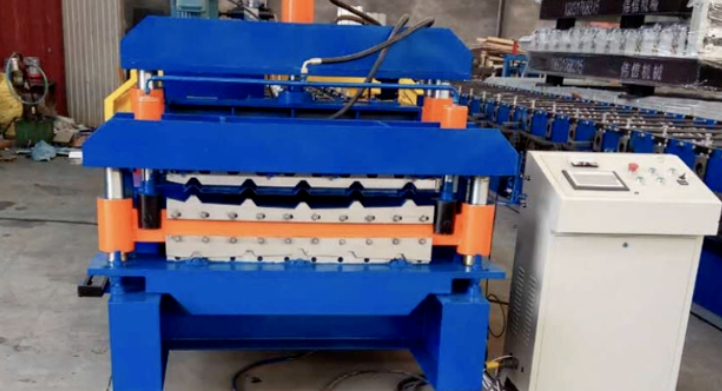Here's a general guide on the process:
1. Pre-Calibration Inspection
- Machine Cleanliness: Ensure the roll forming machine is clean and free of debris that may affect calibration.
- Roll Alignment: Check the roll tooling alignment to prevent material twisting or forming defects.
- Lubrication: Inspect the machine's lubrication system and apply lubrication where needed to reduce wear.
2. Material Inspection
- Material Thickness: Verify the thickness of the material to be used matches the machine's setup.
- Material Width: Measure the width to ensure it corresponds to the intended product.
- Material Hardness: If your material varies in hardness, it might require adjustments in forming pressure.
3. Tooling Setup
- Roll Gap Adjustment: Each forming station should be set so the gap between rolls corresponds to the material thickness plus any forming allowance.
- Step-by-Step Check: Adjust each station individually, starting from the entry guide to the final station. Tighten or loosen the rolls based on the material forming behavior at each stage.
4. Machine Settings
- Speed Settings: Set the roll forming machine speed based on material type and thickness. Higher speeds can increase the risk of defects with thicker or more brittle materials.
- Hydraulic or Electrical Adjustments: Ensure hydraulic pressure or electrical settings are aligned with the material’s requirements, especially if the machine has hydraulic cutoff or punching features.
5. Running a Test Piece
- Feed Material: Slowly feed a test piece into the machine to observe its performance and make adjustments as needed.
- Measure the Profile: Use calipers or a profile gauge to check if the formed part matches the required dimensions.
- Check for Defects: Look for common roll forming defects like wrinkling, bowing, or edge cracking and make necessary adjustments.
6. Fine-Tuning
- Adjust Roll Tensions: Fine-tune the roll tensions if the material is over-stressed or if the profile dimensions are off.
- Entry Guide Adjustments: Adjust the entry guide to ensure the material feeds straight into the rolls.
7. Final Calibration
- Re-run the Test: After adjustments, run another test piece and measure it again to ensure it meets specifications.
- Log Settings: Document the settings for future reference, which will help speed up future calibrations.
By ensuring each of these steps is followed carefully, the roll forming machine should produce consistent, high-quality parts. Let me know if you need specific information regarding a type of machine, like the Snaplock Standing Seam panel roll forming machine!
Machine matcher specialise in matching your roll forming machine requirements with the perfect new or pre owned machine.
We partner with, and represent some of the finest roll forming manufacturers in the market. For more information and a free machine quote please contact us today or view all machines.



